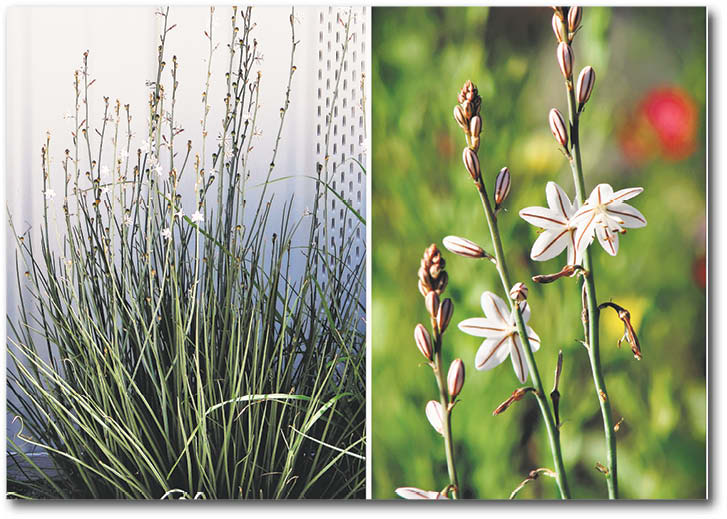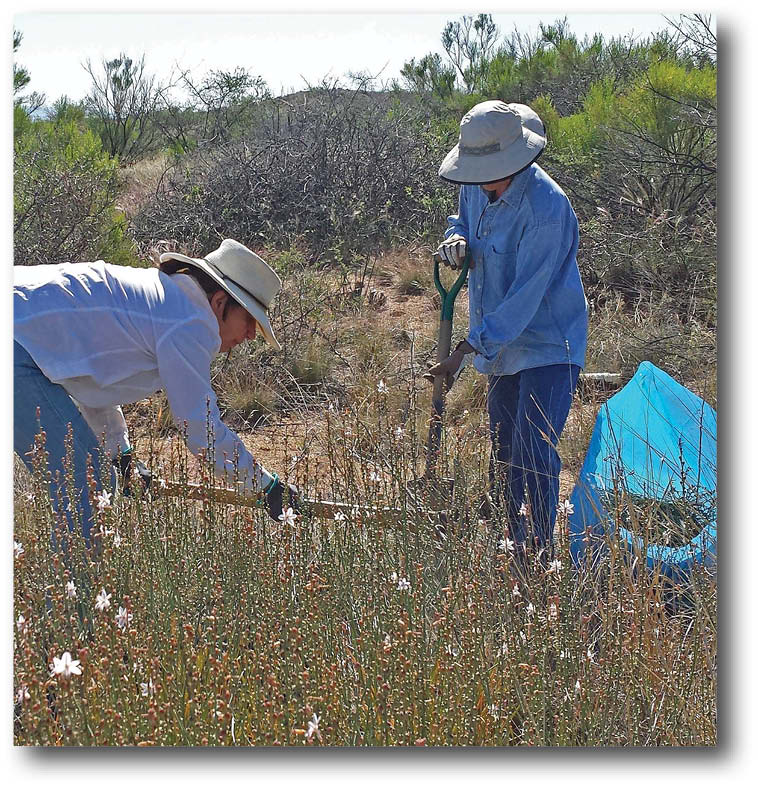
ONIONWEED (Asphodelus fistulosus L.) has been classified as a federal noxious weed since 1984 because of its highly invasive properties. Onionweed is a prolific seeder and can grow so thickly that it considerably reduces native species, and it is unpalatable to livestock and wildlife. If you see this weed please remove it, double bag, and place in your dumpster to be taken to the sanitary landfill.
A meeting was held at the Oracle Fire Department on April 15, 2015, to raise awareness of the invasive onionweed that has been reappearing in the Tri-community area. The guest speaker was Jolanta Sokol from the US Department of Agriculture, Plant Protection and Quarantine. Jolanta was part of the onionweed monitoring and removal program in Oracle and San Manuel between 2006 and 2007. Jolanta was successful in removing and nearly eliminating onionweed in Oracle and San Manuel; however, in spite of the progress in removing this invasive plant, the program was discontinued in 2010. Jolanta talked about the importance of her work on the project, and she explained why this plant is considered invasive.
Onionweed (Asphodelus fistulosus L.) has been classified as a Federal noxious weed since 1984 because of its highly invasive properties. Onionweed is a prolific seeder and can grow so thick that it reduces the native species by consuming available soil and water resources. Onionweed is not eaten by wildlife and it is unpalatable to livestock. In contrast, native plants have evolved as part of the ecosystem which makes them adapted to soil, climate, and animals in the ecosystem. Specific animals and insects rely on the native plants for their survival. Invasive plants, like the onionweed, know no boundaries, and negatively impact the ecosystem. Of course, some introduced plants are not invasive and we rely on them for food, such as tomatoes and other vegetables.
Other examples of invasive weeds are the giant reed, bamboo, (Arundo donax) and buffelgrass (Pennisetum ciliare syn. Cenchrus cilaris). Giant reed has created huge problems in waterways, such as Sabino Canyon and it can bring with it destructive insects such as the arundo wasp (Tetramesa romana), arundo scale (Rhizaspidiotus), and arundo leafminer (Lasioptera donacis). Invasive weeds can affect native plants and wildlife, and they can change the fire regime. Buffelgrass for example, is a highly invasive grass, which burns hotter than native grasses, during wildfires, reaching estimated temperatures of nearly 1,300 degrees F. If you see any onionweed, it should be removed by the root, double bagged, and thrown away. For further assistance identifying onionweed, you can go to the San Manuel and Oracle libraries of http://www.desertmuseum.org/invaders/invaders_onionweed.php.


